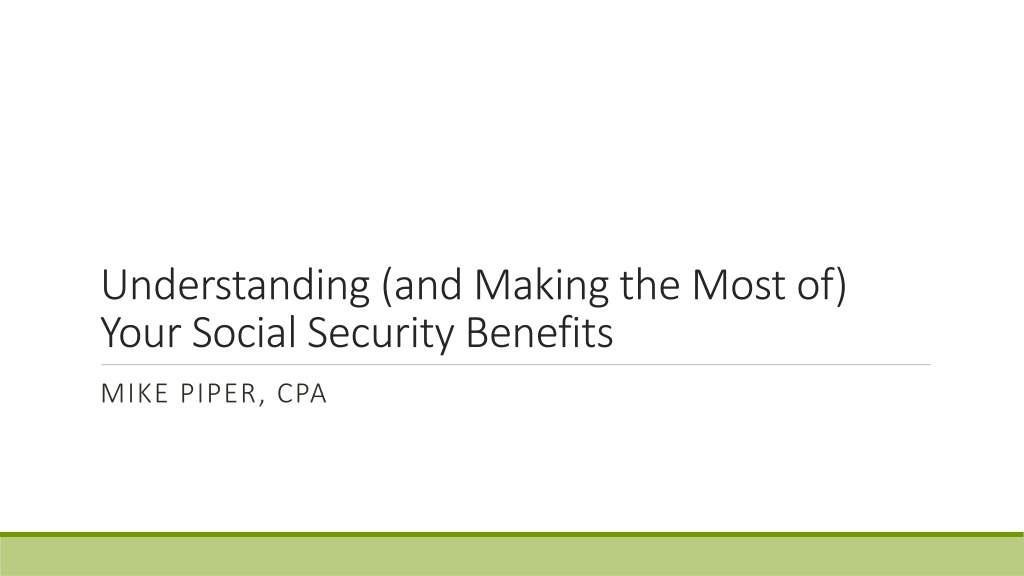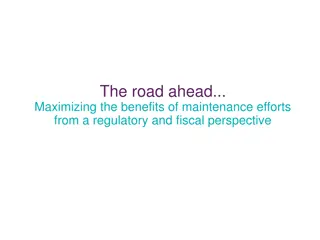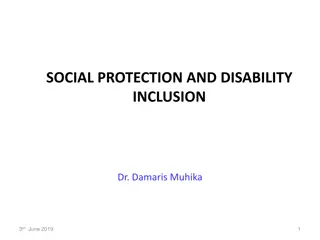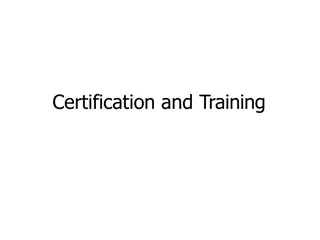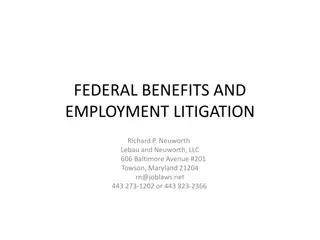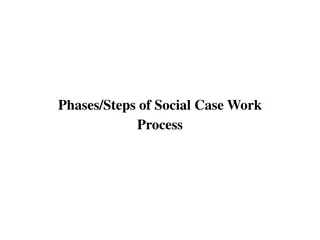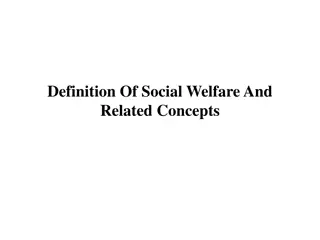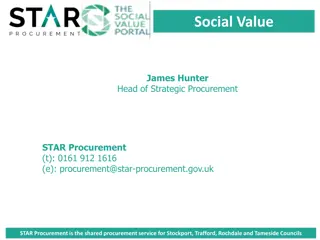Maximizing Social Security Benefits Guide
Understand the importance of learning about Social Security benefits to make informed decisions. Discover key factors such as when to file for benefits, qualifying criteria, essential terms, and how the Primary Insurance Amount is calculated based on earnings. Gain insights on strategies that can impact your benefits significantly.
Download Presentation

Please find below an Image/Link to download the presentation.
The content on the website is provided AS IS for your information and personal use only. It may not be sold, licensed, or shared on other websites without obtaining consent from the author. Download presentation by click this link. If you encounter any issues during the download, it is possible that the publisher has removed the file from their server.
E N D
Presentation Transcript
Understanding (and Making the Most of) Your Social Security Benefits MIKE PIPER, CPA
Why Learn About Social Security? Why Learn About Social Security? 2017 Trustees Report: 100% of promised benefits until 2034. 77% afterwards. Even if no fix gets passed, it s not going to zero.
Why Learn About Social Security? Why Learn About Social Security? Years at Max Earnings Annual Benefit at 62 Annual Benefit at 70 35 $25,752 $45,420 30 $24,048 $42,408 Not a trivial amount of money!
Why Learn About Social Security? Why Learn About Social Security? You have a choice of when to file for benefits. Good strategy vs. bad strategy: difference of $100k - $200k for married couple with one person at maximum earnings level
Qualifying for Retirement Benefits Qualifying for Retirement Benefits Must be age 62 or older. Must have earned 40 Social Security credits over your career. $1,320 to earn a credit (in 2018). Max of 4 credits earned per year.
Two Terms to Know Two Terms to Know Full Retirement Age (FRA) Primary Insurance Amount (PIA)
Two Terms to Know Two Terms to Know Year of Birth Full Retirement Age 1943-1954 66 1955 66 and 2 months 1956 66 and 4 months 1957 66 and 6 months 1958 66 and 8 months 1959 66 and 10 months 1960 or later 67
Two Terms to Know Two Terms to Know Primary Insurance Amount (PIA) monthly retirement benefit, if claimed at FRA
PIA is Based on Earnings PIA is Based on Earnings AIME = Average Indexed Monthly Earnings Exclude anything over max each year ($128,400 for 2018) Adjust for wage-inflation Select 35 highest-earning years Total those earnings Divide by 420 (# of months in 35 years)
PIA Calculation (bend points) PIA Calculation ( bend points ) For somebody 62 in 2018, PIA is equal to: 90% of AIME up to $895, plus 32% of AIME from $895 to $5,397, plus 15% of AIME above $5,397. AIME of $4,000 PIA = $1,799 AIME of $8,000 PIA = $2,636
Social Security and Early Retirement Social Security and Early Retirement How much does an additional year of maximum earnings increase your annual retirement benefit? (at FRA) For each of first 3 years of maximum taxable earnings: $3,302 increase For each of next 17.5 years of maximum taxable earnings: $1,174 increase For each year beyond that (up to 35 total years): $550 increase
Age When You Claim Retirement Benefits Amount of Monthly Retirement Benefit 5 years prior to FRA 70% of PIA 4 years prior to FRA 75% of PIA 3 years prior to FRA 80% of PIA 2 years prior to FRA 86.67% of PIA 1 year prior to FRA 93.33% of PIA At FRA 100% of PIA 1 year after FRA 108% of PIA 2 years after FRA 116% of PIA 3 years after FRA 124% of PIA 4 years after FRA 132% of PIA
Retirement Benefit Summary Retirement Benefit Summary Primary Insurance Amount (PIA) = monthly benefit if claimed at FRA Get less than PIA if you file early. Get more than PIA if you wait beyond FRA. Specifically, about 75% more at 70 relative to 62.
Qualifying for Spousal Benefits Qualifying for Spousal Benefits (Usually) must be age 62 or older. (Usually) must have been married to your spouse for at least 1 year.
Amount of Spousal Benefit Amount of Spousal Benefit (without own Retirement Benefit) (without own Retirement Benefit) If claimed at FRA: 50% of spouse s PIA Reduction for filing before FRA No increase for waiting beyond FRA
Spousal Benefits Spousal Benefits (without own Retirement Benefit) (without own Retirement Benefit) Age When You Claim Spousal Benefits 50% of spouse s PIA, multiplied by: 5 years prior to FRA 65% 4 years prior to FRA 70% 3 years prior to FRA 75% 2 years prior to FRA 83.33% 1 year prior to FRA 91.67% At FRA 100%
Spousal Benefits w/ Retirement Benefit Spousal Benefits w/ Retirement Benefit Same calculation as before, except instead of 50% of your spouse s PIA it s 50% of your spouse s PIA, minus the greater of your PIA or your retirement benefit Roughly speaking, you get your own retirement benefit, or your spousal benefit, whichever is larger.
Qualifying for Survivor Benefits Qualifying for Survivor Benefits Must be age 60 Must not have remarried, unless you remarried after reaching age 60
Amount of Survivor Benefits Amount of Survivor Benefits At full retirement age: amount that deceased spouse was receiving (sometimes slightly more) Reduced if you file early. No increase for waiting beyond FRA. With retirement benefit, you get greater of the two.
Benefits for Divorcees Benefits for Divorcees Same rules as for people who are still married, for the most part Marriage must have lasted at least 10 years Usually cannot get benefits on prior spouse s record if you are married to a new spouse
Summary: Spousal and Survivor Benefits Summary: Spousal and Survivor Benefits Spousal Survivor Required Age 62 60 Full benefit amount Amount deceased spouse was receiving (or slightly more) Yes 50% of spouse s PIA Yes Reduction for filing early? Increase for waiting beyond FRA No No Together with own retirement benefit Greater of the two (roughly) Greater of the two
When to File for Benefits? (Unmarried) When to File for Benefits? (Unmarried) Eager Edward: files at 62 Patient Pete: waits to 70 Pete catches up at age 80.5
When to File for Benefits? (Unmarried) When to File for Benefits? (Unmarried) Per SSA 2014 period life table, life expectancy for 62 year old is 83.5. Your life expectancy is probably longer than average.
What About Investment Returns? What About Investment Returns? Higher return means it takes longer for wait until 70 strategy to catch up. 62 vs. 70 (FRA of 66 and 4 months) Inflation-Adjusted Return Breakeven Age (rounded) 0% 80 1% 2% 82 83 Current yield on TIPS: 0.77% for 10-year 0.92% for 20-year 3% 85 4% 5% 87 90
Comparing to Other Income Options Comparing to Other Income Options Inflation-Adjusted Single Premium Deferred Lifetime Annuity insurance product that provides lifetime income just like Social Security Payouts on CPI-adjusted lifetime annuities, with income beginning at 70, range from 5.04% to 7.2% for 62-70 year olds. If you delay until 70, for every $10,000 you give up over that period, you get $950 of annual inflation-adjusted lifetime income starting at age 70 (9.5% payout).
Delaying Benefits Reduces Risk Delaying Benefits Reduces Risk Financially scary retirement scenarios are those in which you live a long time. Delaying benefits works out well if you live a long time.
3 Good Reasons to Delay Benefits 3 Good Reasons to Delay Benefits 1. Most people live past breakeven point. 2. Other income options don t pay as much. 3. Delaying benefits reduces impact of longevity risk.
2 Good Reasons to Claim Early 2 Good Reasons to Claim Early 1. You need the money right now. 2. You have a shorter than average life expectancy.
When to File for Benefits? (Married) When to File for Benefits? (Married) High-PIA spouse delays: increases monthly benefit while either spouse is alive. (Second-to-die life expectancy.) Low-PIA spouse delays: increases monthly benefit while both spouses are alive. (First-to-die life expectancy.)
When to File for Benefits? (Married) When to File for Benefits? (Married) High-PIA spouse should usually wait until 70, should almost never claim at 62. Low PIA spouse should usually claim earlier waiting longer if both spouses have long life expectancy or are generally concerned about longevity risk.
Restricted Applications (Free Benefits) Restricted Applications ( Free Benefits) Must have been at least age 62 as of 1/1/2016. Once you reach FRA, if your spouse is collecting retirement benefit, you can file for just spousal benefits. Get spousal benefits for 4 years while your own benefit grows. Usually, lower earner files early. Higher earner files restricted application at FRA, then for own benefit at 70.
Restricted Applications (Survivor Benefits) Restricted Applications (Survivor Benefits) Deemed filing doesn t apply to widow(er) benefits. Can file at 60 for widow(er) benefit, then for own at 70. Or, can file for retirement at 62, then widow(er) at FRA.
Political Risk Political Risk 2017 Trustees Report: 100% of promised benefits until 2034. 77% afterwards. The system willchange, but we don t know exactly how. This is not necessarily a reason to claim early. Depending on the change, it might make it more advantageous to delay. Or could have no effect. Most likely changes (taxes, or increase in FRA) have no effect on decision.
Understanding (and Making the Most of) Your Social Security Benefits MIKE PIPER, CPA
